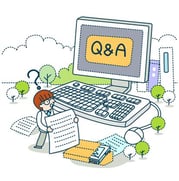When your ERP vendor announces your software has reached its end of life (EOL), you may feel a momentary sense of panic. Your ERP system is such an essential part of your business that it may be hard to imagine what you would do without it. Not to worry! It's possible to make ERP EOL a non-event, with little or no negative impact on your day-to-day operations. Handled strategically, ERP EOL could be a golden opportunity to make changes that result in improved efficiency and reduced costs overall. Take a deep breath, sit back and read on to discover our step by step guide for deciding how to manage software EOL.

Step 1: Contact Your Current Vendor
Your current vendor probably has an upgrade path to their most current product. DON'T blindly upgrade to a new product without making sure it’s a fit for your business. DO take the opportunity to re-evaluate your vendor and evaluate their current product.
It's possible that your vendor has changed their industry focus or made functional changes that make their new product or version unsuitable for your specific business needs. Understand the strengths and weaknesses of their system that's reached EOL and then ask your account manager for a demo of their new product, so you can determine if it meets your needs. If it’s been a while since you looked at new ERP software, you may be pleasantly surprised to discover new functionality.
Step 2: Evaluate the Cost of Staying with your System Unsupported
Just because the vendor has declared EOL for the product, doesn’t mean you have to. End of life usually just means that the vendor will no longer upgrade the ERP system and at some point, standard service may be discontinued. If the product suits your needs now and for the foreseeable future, there’s no need to rush into making a change.
However, if your system is unstable or if you have frequent issues that necessitate support calls, you may not be able to continue running your system as is. Most ERP vendors will supply support on a time and materials basis even for unsupported versions of their software, so you will probably be able to get support for major issues, even if you don’t have a standard support contract. Before deciding to run unsupported software, check with your vendor to verify whether or not they have a time and materials support policy in place.
Even with limited or makeshift support, running unsupported software poses risks that can be daunting.
- Your vendor will not provide updates to keep up with industry or regulatory changes, which could leave you with unhappy customers, government fines or other sanctions.
- It will take longer to resolve problems, since there will be fewer skilled resources available at the vendor and on the open market.
- You will not have access to vendor training.
- Your ERP system may not run on current generations of hardware, databases or operating systems at some time in the near future. As your infrastructure ages, this risk increases dramatically.
Ask "What would it cost if my system went down for a day or a week?"
Step 3: Calculate the Cost of Making a Transition
Changing ERP systems can be costly. Before you make any decision, calculate the costs of all options, including a factor for the risk of moving forward with unsupported software. Once you consider several potential paths objectively, the right decision for your organization should become crystal clear. Gains can be made during this process if it is used as an opportunity to cost out your options and choose a solution that offers a new begining at EOL.






